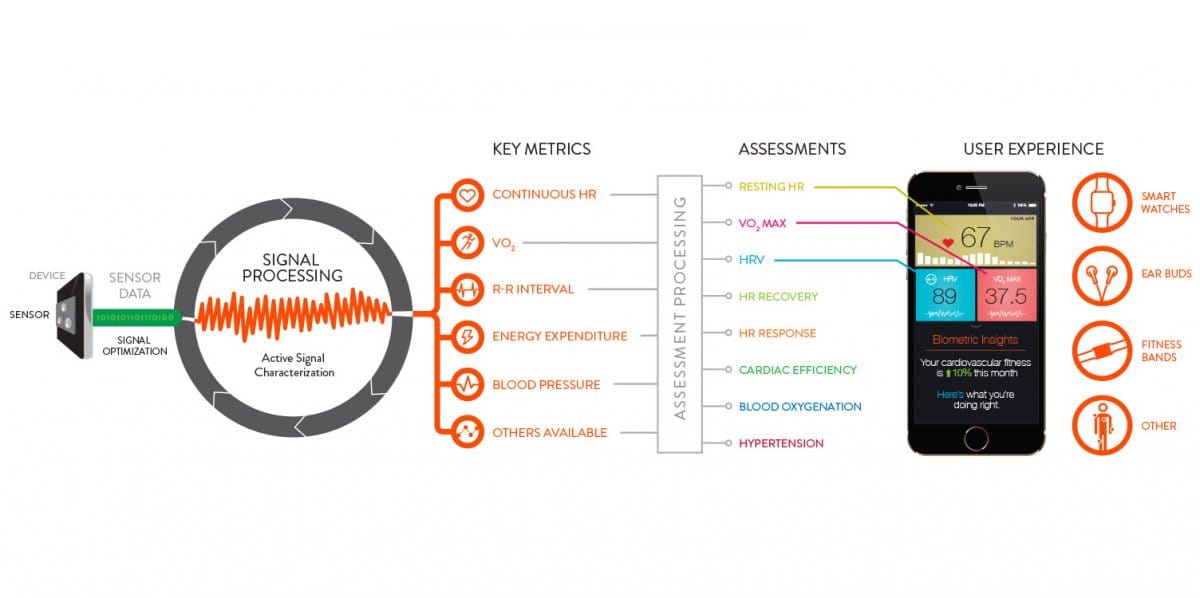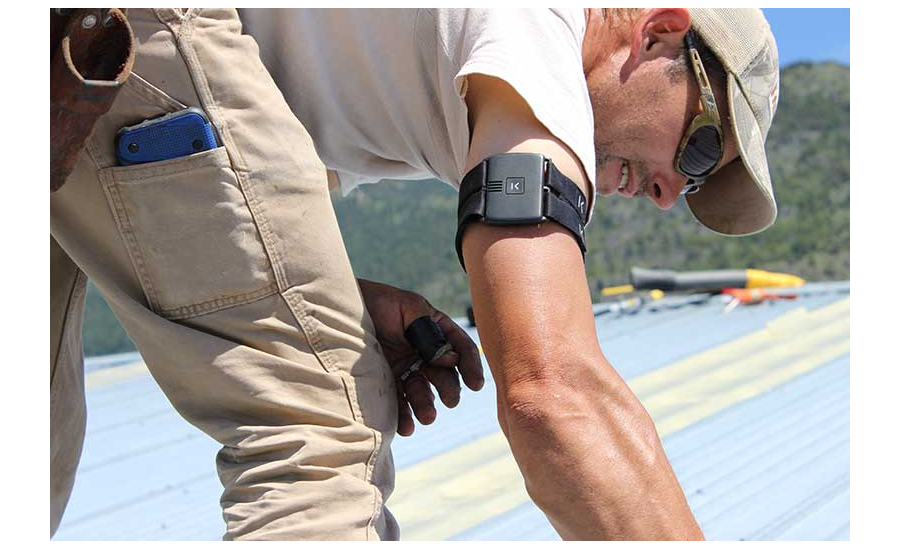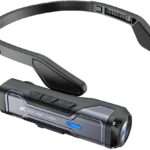Wearable biometric sensors track vital signs and physical activities. They provide real-time health data through compact, wearable devices.
Wearable biometric sensors have revolutionized personal health monitoring. These devices measure heart rate, sleep patterns, and physical activity. They use advanced technology to collect and analyze data, providing insights into overall well-being.
Users can access real-time feedback, helping them make informed health decisions.
Wearable sensors are integrated into everyday items like watches and fitness bands, making them convenient. They are popular among fitness enthusiasts and those managing chronic conditions.
The data collected can be shared with healthcare providers for better diagnosis and treatment. Wearable biometric sensors are a game-changer in proactive health management.

Credit: valencell.com
The Dawn Of Wearable Biometric Sensors
The dawn of wearable biometric sensors is here. These devices are changing our lives. They offer real-time health monitoring and valuable data insights. Imagine wearing a gadget that tracks your heart rate or sleep patterns. This is no longer science fiction; it’s reality.
From Fiction To Reality
Years ago, wearable biometric sensors were just a dream. People saw them in movies and thought, “Someday, maybe.” Today, that someday is now. We have smartwatches that measure our steps, heart rate, and even oxygen levels. Fitness trackers keep us on our toes, literally.
Wearable technology has evolved rapidly. It started with basic step counters. Now, we have advanced devices that can detect serious health issues. These sensors are small, comfortable, and accurate. They blend seamlessly into our daily lives.
Key Innovations Driving Growth
Several key innovations are driving the growth of wearable biometric sensors. Here’s a breakdown:
| Innovation | Impact |
|---|---|
| Miniaturization | Smaller sensors fit comfortably on the body. |
| Improved Accuracy | More reliable data for better health insights. |
| Battery Life | Longer-lasting devices for continuous monitoring. |
| AI Integration | Smarter analysis of biometric data. |
Miniaturization allows sensors to be less intrusive. They fit into watches, bands, or even clothing. This makes them more user-friendly. Improved accuracy ensures the data collected is reliable. This is crucial for health monitoring.
Longer battery life means users don’t need to charge their devices often. This leads to consistent data collection. AI integration takes it a step further. It helps in analyzing the data smartly, offering deeper insights.

Credit: aaep.org
How Wearable Biometric Sensors Work
Wearable biometric sensors are fascinating devices. They measure various body metrics. These sensors help track health and fitness. But how do they work? Let’s dive into the science behind them.
The Science Behind The Sensors
Wearable biometric sensors use advanced technology. They rely on tiny sensors embedded in devices. These sensors capture different signals from the body. They use optical sensors, electrodes, and accelerometers.
Optical sensors use light to measure heart rate. They shine a light on the skin. The light reflects back. This reflection tells the sensor about blood flow.
Electrodes measure electrical activity. They are great for tracking heart rhythms. They detect electrical signals from the heart.
Accelerometers track movement. They measure acceleration in different directions. This data helps to count steps and monitor physical activity.
Types Of Biometric Data Collected
Wearable biometric sensors gather various types of data. Here are some key metrics:
- Heart Rate: Measures beats per minute.
- Steps Taken: Tracks daily step count.
- Calories Burned: Estimates energy expenditure.
- Sleep Patterns: Monitors sleep stages and quality.
- Blood Oxygen Levels: Measures oxygen saturation.
Some wearables also track advanced metrics. These include ECG readings and skin temperature. The collected data can be displayed on a smartphone. Apps provide insights and trends over time.
| Metric | Sensor Type | Example Device |
|---|---|---|
| Heart Rate | Optical Sensor | Fitbit Charge |
| Steps Taken | Accelerometer | Apple Watch |
| Calories Burned | Multiple Sensors | Garmin Vivosmart |
| Sleep Patterns | Optical Sensor & Accelerometer | Oura Ring |
| Blood Oxygen Levels | Optical Sensor | WHOOP Strap |
Wearable biometric sensors offer valuable health insights. They are a blend of science and technology. They make it easy to monitor and improve our health.
Benefits Of Wearable Biometric Sensors In Healthcare
Wearable biometric sensors are transforming healthcare. They offer many benefits to patients and providers. These small devices track health metrics in real-time. They help in early diagnosis and better treatment. Below are some key benefits.
Enhancing Patient Care
Wearable biometric sensors can enhance patient care in many ways.
- Continuous Monitoring: They provide 24/7 health monitoring.
- Early Detection: They help detect health issues early.
- Personalized Treatment: Doctors can tailor treatments to individual needs.
These sensors track vital signs like heart rate and blood pressure. They send real-time data to healthcare providers. This helps in prompt medical intervention.
Remote Monitoring Advantages
Remote monitoring is one of the biggest benefits.
- Convenience: Patients can monitor their health from home.
- Reduced Hospital Visits: Fewer trips to the hospital save time and money.
- Better Chronic Disease Management: Continuous monitoring helps manage chronic diseases better.
Doctors can monitor patients remotely. They can adjust treatments based on real-time data. This leads to better health outcomes.
Predictive Analytics In Health
Wearable biometric sensors also aid in predictive analytics.
- Data Collection: They collect valuable health data over time.
- Trend Analysis: Analyzing this data can predict future health issues.
- Preventive Measures: Early predictions allow for preventive measures.
Predictive analytics can foresee health risks. This helps in taking early preventive steps. It leads to healthier lives and reduced healthcare costs.
Wearable Sensors In Fitness And Wellness
Wearable biometric sensors are revolutionizing how we approach fitness and wellness. These devices help track vital health metrics, ensuring a holistic view of our well-being. From tracking physical activity to managing nutrition, these sensors provide invaluable data.
Tracking Physical Activity
Wearable sensors can monitor steps, heart rate, and sleep patterns. They help in measuring calories burned and distance traveled. These devices offer real-time feedback to adjust your activity levels. Advanced sensors can even detect different types of exercises. This helps in creating personalized fitness plans.
Some popular wearable devices include:
- Fitness trackers
- Smartwatches
- Heart rate monitors
- Sleep trackers
Nutrition And Lifestyle Management
Wearable sensors can assist in managing your diet and lifestyle. They track your daily calorie intake and nutrient consumption. These devices can sync with food databases for better diet planning. Some wearables also offer hydration tracking features.
A typical nutrition management plan might include:
- Setting daily calorie goals
- Monitoring macronutrient intake
- Tracking water consumption
- Recording meal times
Integrating wearable sensors into your daily routine can significantly enhance your fitness and wellness journey. They provide critical insights and help you make informed decisions. This leads to better health outcomes and improved quality of life.
Challenges And Considerations
Wearable biometric sensors are revolutionizing healthcare. Yet, they come with challenges. These include privacy, accuracy, and system integration.
Privacy And Security Concerns
One major concern is privacy. Wearable sensors collect sensitive data. This data includes heart rate, sleep patterns, and more. Protecting this data is crucial.
Security is another issue. Hackers can access personal health data. Strong encryption methods are necessary. Users need to feel safe. Companies must ensure robust security protocols.
Accuracy And Reliability Issues
Accuracy of data is vital. Wearable sensors must provide precise readings. Inaccurate data can lead to wrong diagnoses. This affects patient health.
Reliability is also key. Sensors should work consistently. They must not fail during critical times. Maintenance and regular checks are important.
Integration With Healthcare Systems
Healthcare systems need seamless integration with wearables. Data from sensors should be easily accessible. Doctors need this data for better treatment.
| Challenge | Considerations |
|---|---|
| Privacy and Security | Ensure data encryption, strong security protocols |
| Accuracy and Reliability | Regular maintenance, precise data collection |
| System Integration | Seamless data flow to healthcare systems |
Wearable sensors are the future. Addressing these challenges is crucial for their success.
The Future Of Wearable Biometric Sensors
The future of wearable biometric sensors is bright and exciting. These devices are becoming smaller, smarter, and more accurate. They will revolutionize health monitoring and fitness tracking. Let’s explore the latest technologies and trends shaping this future.
Emerging Technologies And Trends
Several new technologies are transforming wearable biometric sensors. Key trends include:
- Flexible Sensors: These sensors can bend and stretch. They provide better comfort and accuracy.
- Smart Fabrics: Clothing with embedded sensors. These monitor health metrics seamlessly.
- Non-Invasive Monitoring: Devices that do not pierce the skin. They measure glucose levels, heart rate, and more.
These innovations make wearables more user-friendly and effective. They ensure continuous health monitoring without discomfort.
The Role Of AI And Machine Learning
AI and Machine Learning (ML) are crucial in wearable tech. They analyze vast amounts of biometric data. This analysis helps in accurate health predictions.
Key benefits of AI and ML in wearables include:
- Personalized Health Insights: AI provides tailored health advice. It considers individual habits and conditions.
- Predictive Analytics: ML predicts potential health issues. Early detection can save lives.
- Improved Accuracy: AI reduces errors in data interpretation. This ensures reliable health monitoring.
AI and ML make wearable biometric sensors smarter. They enhance the user’s health and fitness journey.
| Technology | Description |
|---|---|
| Flexible Sensors | Sensors that bend and stretch for better comfort. |
| Smart Fabrics | Clothing with embedded sensors for seamless monitoring. |
| Non-Invasive Monitoring | Devices that measure metrics without piercing the skin. |
Ethical Implications Of Biometric Monitoring
Wearable biometric sensors are transforming healthcare and personal wellness. They track vital signs and monitor physical activities. But their use raises ethical concerns.
Informed Consent
Informed consent is crucial in biometric monitoring. Users must understand what data is collected. They should know how it will be used and shared. Clear communication is essential for informed decisions.
Here are some key points to consider:
- Explain data collection processes in simple terms.
- Ensure users know their rights.
- Provide easy-to-understand privacy policies.
Data Ownership And Control
Data ownership and control are significant issues in biometric monitoring. Users should have control over their data. They must decide who can access it and how it’s used.
Consider these aspects:
| Aspect | Details |
|---|---|
| Ownership | Users should own their biometric data. |
| Access | Users must control who accesses their data. |
| Usage | Data usage should align with user consent. |
Here are practical steps:
- Implement user-friendly data control options.
- Regularly update users about data policies.
- Ensure transparency in data handling practices.

Credit: www.enr.com
Real-world Applications And Case Studies
Wearable biometric sensors are changing our lives. They help us monitor health and improve performance. Here, we explore real-world applications and case studies.
Success Stories In Health Monitoring
Many people use wearable sensors for health monitoring. These devices track vital signs like heart rate and blood pressure. Below are some success stories:
- John’s Diabetes Management: John uses a wearable glucose monitor. It tracks his blood sugar levels in real-time. This helps him manage his diabetes better.
- Sarah’s Heart Health: Sarah wears a heart rate monitor. It alerts her to abnormal heart rhythms. This early warning saved her from a heart attack.
- Emma’s Sleep Improvement: Emma uses a sleep tracker. It records her sleep patterns. She now sleeps better and feels more rested.
Wearable sensors make health monitoring easy and effective. They provide real-time data and early warnings.
Innovations In Athlete Performance Analysis
Athletes benefit greatly from wearable biometric sensors. These devices help them improve performance. They track various metrics and provide valuable insights. Here are some innovations:
| Innovation | Details |
|---|---|
| Running Sensors | Track speed, distance, and stride length. Help runners optimize their training. |
| Swim Trackers | Monitor strokes, lap times, and heart rate. Aid swimmers in improving their technique. |
| Cycling Sensors | Measure cadence, power, and heart rate. Support cyclists in maximizing performance. |
These innovations help athletes train smarter. They provide detailed data on performance. This leads to better results and fewer injuries.
Frequently Asked Questions
What Are Wearable Biometric Sensors?
Wearable biometric sensors are devices that monitor and record physical and physiological data from the body.
How Do Wearable Biometric Sensors Work?
They use embedded sensors to track metrics like heart rate, steps, and sleep patterns, transmitting data to connected devices.
Are Wearable Biometric Sensors Accurate?
Yes, they are generally accurate, but factors like sensor quality and placement can affect readings.
Can Wearable Biometric Sensors Improve Health?
Absolutely, they help monitor fitness levels, detect health issues early, and encourage healthier lifestyle choices.
What Are Common Uses Of Wearable Biometric Sensors?
They are used for fitness tracking, health monitoring, medical diagnostics, and enhancing sports performance.
Conclusion
Wearable biometric sensors are revolutionizing health monitoring. These devices offer real-time data, enhancing personal well-being. Users gain valuable insights into their fitness and health trends.
As technology advances, these sensors will become even more sophisticated. Embracing wearable biometric sensors can lead to a healthier, more informed lifestyle.
Stay updated with this exciting technology.

A passionate tech blogger and the founder of Best Tech View, a dynamic platform dedicated to all things technology. With a keen interest in the tech, Ahmad strives to provide insightful and engaging content on the latest tech trends, and breakthroughs.


